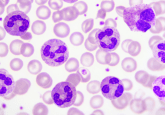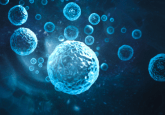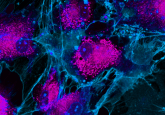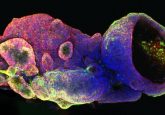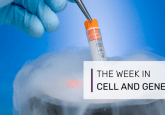Technology digest: the importance of serum- and animal component-free media for stem cell-based therapeutics
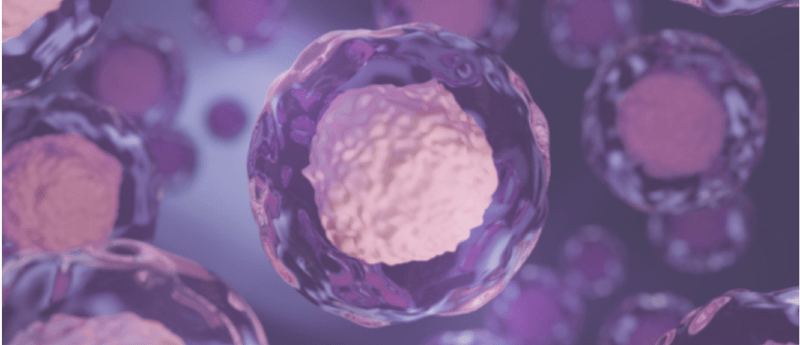
Regenerative medicine is a rapidly evolving field that harnesses the power and flexibility of stem cells to treat degenerative diseases, tissue injury and genetic defects. The ability of stem cells to self-renew and differentiate into multiple cell lineages makes them a valuable resource in medical research and therapy. The translation of cell and gene therapies into the clinic offers significant promise by providing safer and more effective treatments for life-threatening diseases.
In discovery-stage research, serum is an important component of cell culture media. However, the variability in serum composition and performance has led the regenerative medicine industry to shift towards serum- and animal component-free media. This is primarily due to the increased consistency, improved safety profiles and simplified regulatory pathways for chemically defined media culture processes that confer significant advantages as projects move towards the clinic [1]. As these calls for serum-free alternatives grow louder, the question arises: will animal component-free media routinely be adopted earlier in the developmental process for stem cell-based therapeutics?
Cell culture media: getting it right from the start
During the early phases of cell therapy development, the formulation of a medium and the raw materials that constitute it are critical factors that need to be considered. These factors can influence cell growth, viability, differentiation and the quality of the final product, which means it’s crucial to get this correct from the start of your developmental process. As the clinical phases of development are highly regulated, there is a strong need for superior-grade ancillary reagents in the manufacturing of cell therapies to guarantee the safety and suitability of the final product [2]. Ensuring that these raw materials can support clinical manufacturing of a therapy early on helps to reduce not only the risks, but also later costs.
Whether you are working with cell culture in the academic research environment or a commercial setting, the decision on whether to use serum-containing or serum-free media is an important one. Fetal bovine serum (FBS) is the most commonly used media supplement for cells in culture and is generally preferred over other types of cell culture sera [3]. Whilst FBS contains various growth factors and hormones that can help stimulate cell growth and function [4], it also contains unidentified components that can have unknown effects on the performance and safety of a cell product. The use of serum contributes to high batch-to-batch variability, and serum is also unreliable as a raw material due limited availability, potential pathogen transmission and animal welfare considerations [5]. This has driven the research and commercial cell culture community to look increasingly towards developing serum-free cell culture processes.
Advantages of using animal component-free media
Some of the advantages of using serum- and animal component-free media are apparent. Not only does their adoption reduce batch-to-batch variability, but it also reduces the risk of potential viral contaminants that may be present in the serum. However, as Yas Heidari (Protein & Cell Biology Product Manager at Bio-Techne [Europe]) highlighted: “many researchers are still ‘hooked’ on using FBS, however the great advances made recently in serum- and animal-free formulation for media, supplements, and cytokines offer scientists real benefits such as excellent cell culture growth, consistency in performance, not to mention cost savings.”
Removing serum and other undefined components from culture media can also lead to simplified purification and downstream processing. In addition, early adoption of serum-free media removes the need for comparability studies to establish that any raw material changes have not altered the final product. Moreover, serum-free media is more chemically well-defined and contains a finite number of traceable ingredients, resulting in regulatory advantages and increased speed-to-market.
Where are we now with serum-free alternatives?
Many companies have already ventured into the development of serum-free media. For example, Bio-Techne (MN, USA) manufactures a variety of animal-free raw materials/ancillary reagents including recombinant proteins, GMP proteins, media supplements and small molecules. Their animal-free products are manufactured in a dedicated, controlled access facility that is used exclusively for the production, purification and bottling of animal-free proteins.
Bio-Techne has also recently launched their ExCellerate™ iPSC Expansion Medium for the expansion and maintenance of pluripotent stem cells, the first generation of hPSC media to be completely animal-component free. “This medium is specifically designed to support robust expansion and maintenance of high quality, healthy cells,” commented Nathan Allen, the Director of Product Management, Cell and Gene Therapy at Bio-Techne. “It is built to scale with you as you transition into clinical applications with your hPSC-based cell and gene therapies. At Bio-Techne, our goal is to develop innovative solutions that help researchers advance the development of novel cell and gene therapies that can change the lives of patients.”
Speaking about the quality and consistency of Bio-Techne’s cell culture reagent, Miriel Ho, who is the Director of the Vascular and Regenerative Medicine Platform at the CReATe Fertility Centre (Toronto, Canada), described how the ExCellerate iPSC Expansion Medium was “highly supportive in the maintenance of pluripotency of hiPSCs seeded in small colonies as well as single cell format.” Furthermore, Miriel emphasized that “the cells cultured in this medium also expanded very well in a short period, which meant that we could quickly proceed with our downstream studies. We found this to be the case across multiple iPSC lines and also different iPSC clones.”
In addition to this, when asked about the most exciting improvements that were seen from using the medium, Miriel commented: “We were interested to observe that the ExCellerate iPSC Expansion Medium maintained a high degree of stemness in single iPSCs comparable to those grown in colonies. Furthermore, single cell hiPSCs showed improved variability, a shortened lag phase of cell expansion and also exhibited healthy metabolism.”
The ExCellerate iPSC Expansion Medium is therefore an exciting development for regenerative medicine because it is manufactured without using raw materials or components derived from animals or humans, which makes it ideally suited for translational research. Moreover, it is ready-to-use, is compatible with various cell lines and matrices, and provides a consistent environment to ensure reliable performance in generating large quantities of undifferentiated cells – making transition into the clinic much smoother. There is also a GMP version currently in development, which further facilitates translation to clinical manufacturing.
Summary
Serum- and animal origin-free media can provide researchers and manufacturers with more consistent results, safer products and better availability of cell culture media with traceable components. Bio-Techne has a range of animal-free product offerings, ranging from raw materials such as recombinant proteins, GMP proteins, media supplements and more. Not only do they provide full-solution ancillary reagents, services and instruments, but they also offer flexible and pioneering tools to simplify manufacturing processes at every step [7]. With the launch of Bio-Techne’s ExCellerate iPSC Expansion Medium, researchers will be able to advance to an animal component-free development process and smoothly transition into clinical applications with less worry about compatibility or consistency.
Disclaimer
This feature has been brought to you in association with Bio-Techne. The opinions expressed in this feature are those of the author and do not necessarily reflect the views of RegMedNet or Future Science Group.
References
[1] Devireddy LR, Myers M, Screven R, Liu Z, Boxer L. A serum-free media formulation efficiently supports isolation and propagation of canine adipose-derived mesenchymal stem/stromal cells. PLoS ONE doi:10.1371/journal.pone.0210250 (2019).
[2] Tocris. GMP & ancillary material grade small molecules.
www.tocris.com/product-type/gmp-ancillary-material-grade-small-molecules?utm_source=techdigest&utm_medium=rmn&utm_campaign=excellerate_ipsc_media
[Accessed 18 June 2021].
[3] Bio-Techne. Fetal bovine serum (FBS) – EU approved, heat-inactivated.
www.bio-techne.com/p/cell-culture/fetal-bovine-serum-fbs-–-eu-approved-heat-inactivated_s12550h
[Accessed 18 June 2021].
[4] Arora M. Cell culture media: a review. Mat. Methods 3, 175 (2013).
[5] Brindley DA, Davie NL, Culme-Seymour EJ, Mason C, Smith DW, Rowley JA. Peak serum: implications of serum supply for cell therapy manufacturing. Regen. Med. 7(1), 7–13 (2012).
[6] Bio-Techne. Cell and gene therapy.
www.bio-techne.com/research-areas/cell-and-gene-therapy?utm_source=techdigest&utm_medium=rmn&utm_campaign=excellerate_ipsc_media
[Accessed 18 June 2021].
